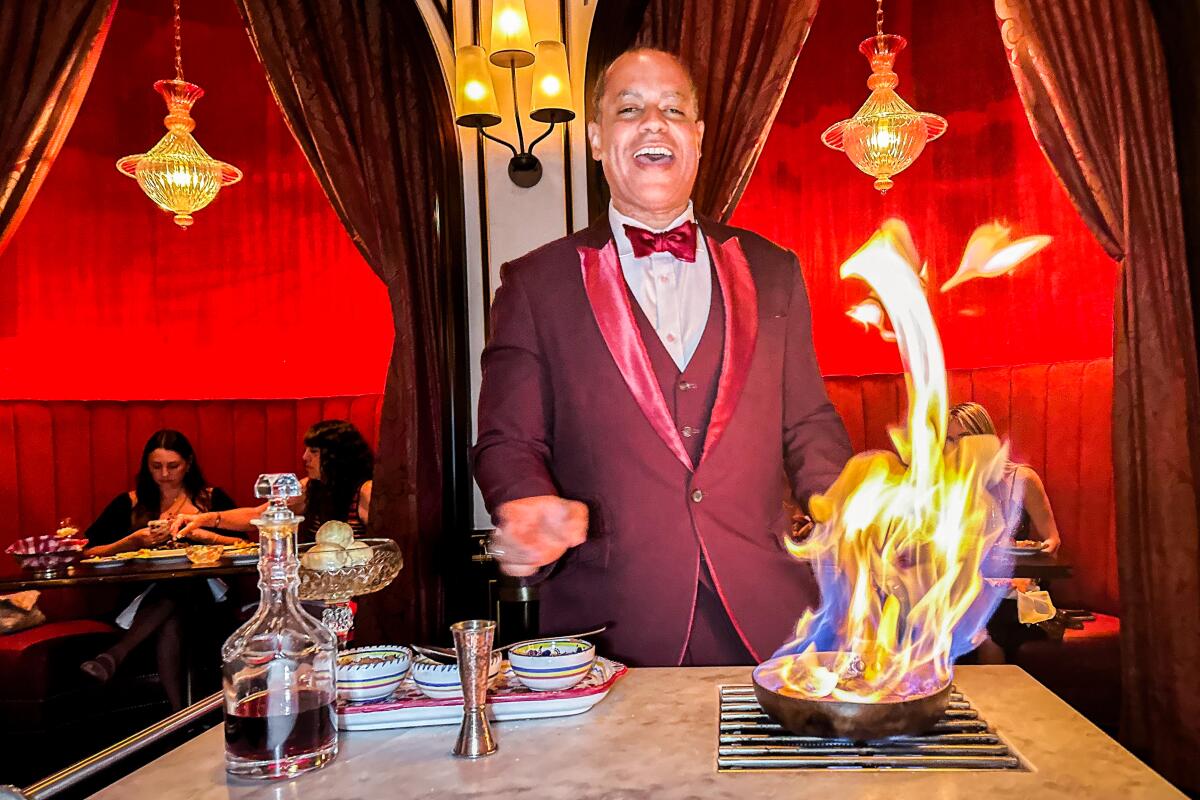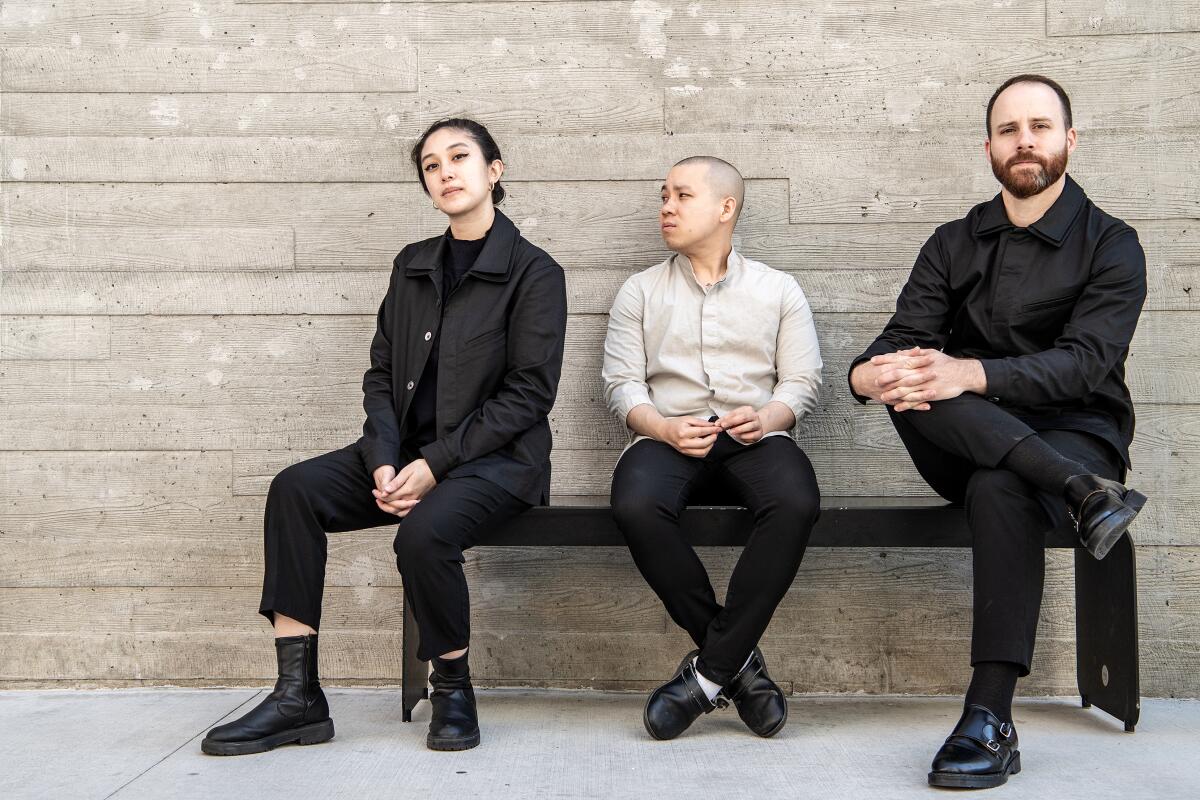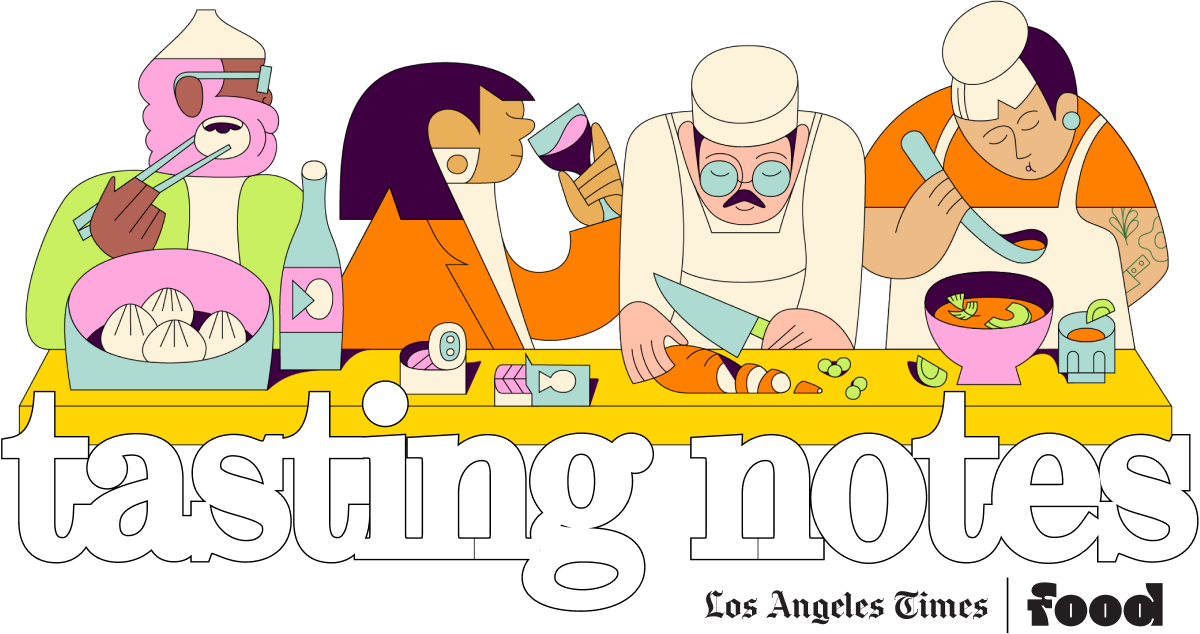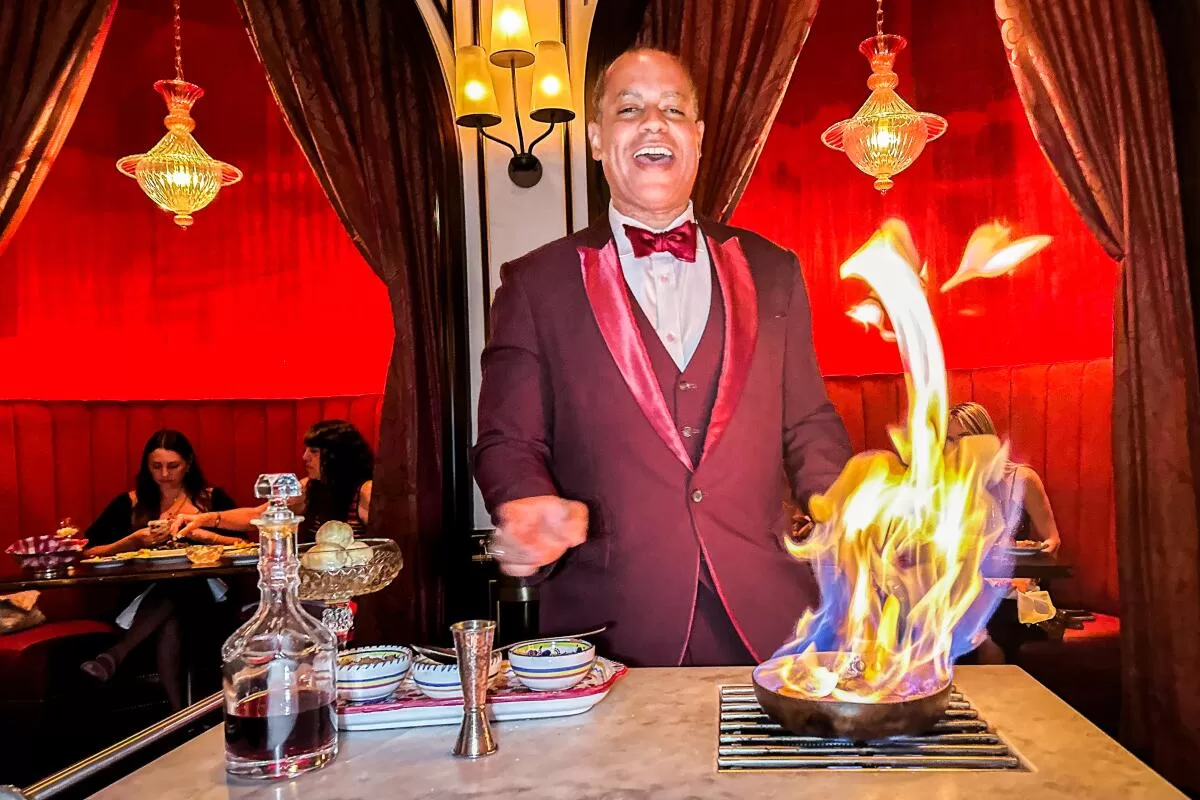I turned left through the round-the-clock jangling and blinging of the Wynn casino and followed the patterned red carpet to the Esplanade shops, passing Chanel and Gucci and Rolex, none of them yet open for the day, and out the exit toward to an escalator that led to the Venetian Resort next door. Back into the air conditioning; through two more casinos; past Cut by Wolfgang Puck, Emeril Lagasse’s Delmonico and Matteo’s Ristorante Italiano; and ignoring the long line at Starbucks, I crossed the hallway instead to Dandelion Chocolate, which sells single-origin bars and bags of hot chocolate mix but also doubles as an espresso bar using beans from San Francisco-based Ritual Coffee Roasters. A smooth cortado felt like the triumphant end to a treasure hunt.
Good morning from nowhere else on earth but Las Vegas.
The best eating in Vegas
I am back on the Strip for the second time in a month. In May, Jenn Harris, Betty Hallock and I spread out across the city, often facing multiple dinners nightly to compile a fresh, thorough guide to dining in Vegas. We have nearly 50 recommendations on and off Las Vegas Boulevard, including the best among new openings, favorites in Chinatown and revisits to long-standing taquerias and luxury dining rooms that qualify as institutions in this always-evolving playground.

Bananas foster from Carbone in Las Vegas.
(Bill Addison / Los Angeles Times)
This week I circled back to attend the World’s 50 Best Restaurant awards, held in Vegas for the first time. It was at once a fitting and oddly surreal location for the proceedings.
British trade magazine Restaurants conceived the awards in 2002; its owner, William Reed media company, continues to run the World’s 50 Best Restaurants brand and its many-pronged spinoffs. After being held annually in London for more than a dozen years, the awards ceremonies began to migrate globally, hosted since 2016 in cities such as New York, Melbourne, Singapore and Valencia, Spain.
Jenn recapped this week’s event, which culminated with the crowning of Disfrutar, a modernist tasting-menu restaurant in Barcelona run by three chefs, Oriol Castro, Eduard Xatruch and Mateu Casañas. They all worked years ago with Ferran Adrià at now-closed El Bulli, the first restaurant to claim the top prize 22 years ago.
What we talk about when we talk about restaurant awards
If you’re reading this newsletter, you probably already have your own feelings about a publicity platform like World’s 50 Best: curiosity, devotion, disdain, apathy, a fluctuating mix. When we were both at Eater, my colleague Ryan Sutton covered the awards regularly with deserved critical analysis that resonated with me: The honors almost always go to extravagantly expensive restaurants, the majority of them helmed by men in European countries.
Recent attempts to diversify the list have shifted the demographics slightly. Last year, for example, the No. 1 slot went to Central in Lima, founded by Virgilio Martínez and joined a year later by Pia León, who became his wife and partner in the operation, with her own adjacent restaurant, Kjolle (which earned the No. 16 spot in this year’s list). Restaurants that take the top spot transcend after a year into a “Best of the Best” category, giving other restaurants a chance at No. 1 annually. (Disfrutar was No. 2 on the list in 2023.)
Video montages and brief descriptions announced each honoree during the live countdown. Sitting in the audience, what struck me most was how, beyond the near-universal pics of sculpturally arranged food on exquisite ceramics, nearly every restaurant stressed a purposeful sense of place as a key part of its identity.
“Sense of place” is a threadbare phrase in food-media speak, I know. My point is, I was chewing on the irony that these driven, highly publicized chefs — these de facto ambassadors of their countries from nearly every corner of the Earth — converged to celebrate themselves in a city where the nexus of tourism is devoted to fantasy. There is no “here” on the Strip. There is what conglomerates dictate the identity to be, yard by yard, and what visitors embrace, and where the chefs producing the best cooking often take second billing to the more celebrated personalities on the marquees, or to the restaurant’s concept.

Kato partners Nikki Reginaldo, left, chef Jon Yao and Ryan Bailey outside the restaurants’ location at the ROW DTLA.
(Mariah Tauger / Los Angeles Times)
I argued back to myself that chefs on the World’s 50 Best Restaurants list also create their own versions of fantasy meals: laboriously prepared, sumptuously framed and graciously presented flights of the imagination. They can blur notions of art and craftsmanship, and intellect and heart, for those who are able to afford them.
Hometown pride disrupted my spiraling thoughts.
The year’s 50 top restaurants included only two in the United States: Atomix in New York at No. 6, and SingleThread in Healdsburg, Calif., which reentered the list at No. 46. But the event also includes a handful of addendum awards, including an annual “One to Watch” commendation. It was revealed a few weeks ago that Kato in Los Angeles was this year’s recipient.
For the Times’ most recent 101 Best Restaurants in Los Angeles guide, I ranked Kato No. 1 for Jon Yao’s masterful Asian diaspora-inspired cuisine (and for the incredible beverage program). In the video that accompanied the “One to Watch” presentation at the ceremony, Yao talks about representing the food he grew up eating in the San Gabriel Valley, and the way he entwines memory and nostalgia with the bounty of Southern California. Then Yao and several of his team members filed out of their seats and walked to the stage, where they looked emotional and visibly nervous as they stood close together and tried to take in the applause.
At a time of well-documented crisis for L.A. restaurants, where the futures of all kind of businesses that feed people for a living are uncertain, how could I think about Kato’s bootstrap origins in a West L.A. strip mall eight years ago and not be moved by the recognition?
Awards can be meaningless and self-congratulatory, and they can also be validation to nudge praiseworthy people to keep the faith in their meaningful work.
Also …

